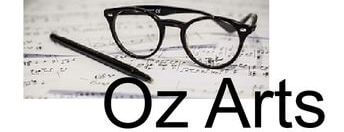FAUST (Gounod)
W.A.Opera Company and Chorus
W.A.Symphony Orchestra
His Majesty’s Theatre
reviewed by Neville Cohn
What elevates this production of Gounod’s Faust to a special category of excellence is its unequivocal and powerful anti-war message. Of many presentations of Faust encountered over the decades, most of them significant in one way or another, not one – until now – has so effectively conveyed the madness of armed conflict. In every other production I’ve seen, the Soldiers’ Chorus scene, that most instantly recognisable of all Faust excerpts, has featured in an unambiguously celebratory way with flags fluttering, soldiers proudly marching and sweethearts and parents jovial, proud and smiling.
This has become an operatic cliché, that is to say, until this production which sweeps away this jingoistic hokum, a patently false notion of war as fun. Instead, we’re given a stunningly different dramatic statement. Here we see disfigured and dying soldiery, the maimed on crutches, some on stretchers, others pasty-faced, shell-shocked, blankly staring. It made for powerful viewing and listening (not that it’s ever likely to stop old men with too much power sending young men – and now women – to often pointless deaths).
Also memorable was that other crucial episode in which the devil reveals his Achilles heel, cowering as dark-clad choristers show him the sign of the cross as they sing the Chorale of the Swords.
Bruce Martin was a good choice as the Devil; he has cornered the local market insofar as diabolical types are concerned. And here, his sardonic, leering presence (with his improbable retinue of muscle men in Arabian Nights-style garb) could hardly be faulted.
Keith Lewis was unfailingly expressive in the eponymous role although occasionally his voice let him down with a cracked note her and there high on the register. But in visual terms, he appeared far too youthful in the opening scene. Faust, after all, is a very old man with fading libido, contemplating suicide, when he has his satanic encounter and, in what turns out to be a very poor bargain, sells his soul in return for youth and women.
In this production, though, he seemed, to begin with, little more than middle-aged, neither grey-haired nor balding as one would expect of someone nearing the end of life. And removing his spectacles for his transformtion did almost nothing to make him look any younger.
His scene in which Faust stabs Valentin, Marguerite’s brother, to death – his knife guided by the devil – came across powerfully, even more so because – in a rare departure from the norm – Siebel, too, is fatally knifed by Faust.
For much of the evening, Elisa Wilson, as Marguerite, shaped to the demands of her role like wine to a goblet. Sounding more vocally assured than I can readily recall in some time, she was, variously, modest, coquettish and – pregnant with Faust’s bastard child – deranged.
This latter incarnation, though vocally persuasive, bordered on melodrama, Marguerite’s pasty white face more appropriate for, say, a distressed heroine in some 1917-era silent movie; it was over the top. But there was compensation in her aria about the King of Thule; it was altogether pleasing.
And the descent to Hell, in a clinch, of Faust and Mephistopheles was, visually, a moment of such inconsequence as to almost entirely drain it of dramatic force. Unusually, the closing scene, traditionally set in a prison, was an insane asylum. And instead of Marguerite’s soul being seen to be borne aloft by angels, as Gounod envisaged it, we see her dying against a tableau of asylum inmates gesturing heavenwards and watched by two nuns who charmingly keep their charges under control by bashing them with wooden clubs.
There was some inspired casting in smaller roles. Fiona Campbell, unrecognisable as Siebel, the young man charged with protecting Marguerite, was, as ever, in glorious voice. (Why is this exceptional singer not heard in more substantial roles?). Also a delight was Sarah-Janet Dougiamas as Marguerite’s neighbour Marthe Schwerlein. Every note and gesture was here made meaningful; she, too, is a singer to watch. Mark Alderson as Wagner and Lucas de Jong as Valentin made the most of minor roles.
In this Olympic season, it was conductor Stephen Barlow who thoroughly deserved a laurel crown, drawing from a reduced W.A.Symphony Orchestra in the pit, some of the most persuasive accompaniments I can recall hearing at an opera at His Majesty’s Theatre. Strings sounded gratifyingly fine and oboist Joel Marangella and Alan Meyer (clarinet) provided outstanding contributions.
There were any number of imaginative directorial touches such as placing the chorus under umbrellas with what was presumably the pre-recorded sound of rain heard in the background. Dressing the chorus in dark blue or black was an inspiration, adding memorably to the brooding, oppressive nature of much of the opera. But most unusually for a WAOC production, the chorus was not always quite synchronised with the accompanying orchestra.
I admired Matthew Barclay’s choreography which, unlike most dance presentations in Faust, was cleverly woven into, rather than gratuitously imposed on, the action. Shane Collard, with clean line and strong presence, shows much promise.
John Gunter designed the sets, that of Act 1 – Faust’s study – cluttered with the detritus of a scholarly life, a place clearly foreign to any cleaning lady’s ministrations. Nigel Levings’ lighting design splendidly underscored the prevailing mood of the moment.
Copyright Neville Cohn 2004

 Chopin, Liszt, Francaix, Gershwin, Debussy, Mendelssohn, Nyman, Ellington, Satie, Ravel
Chopin, Liszt, Francaix, Gershwin, Debussy, Mendelssohn, Nyman, Ellington, Satie, Ravel Elizabeth Anderson (harpsichord)
Elizabeth Anderson (harpsichord)